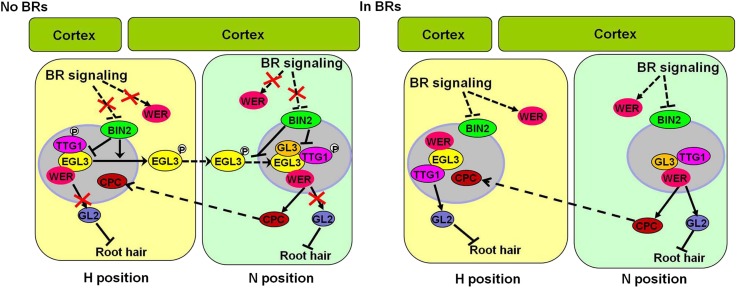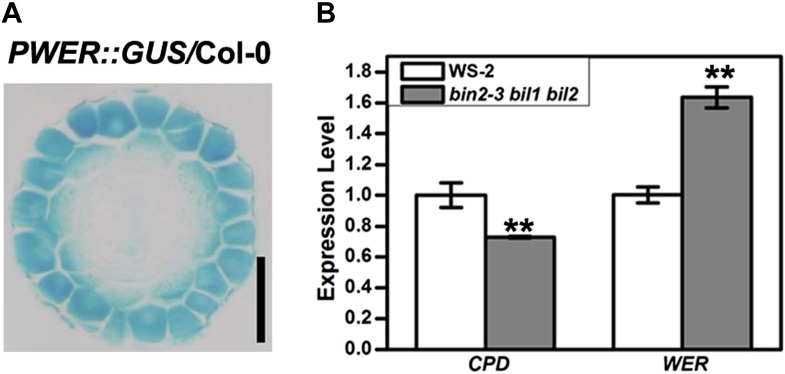Figure 8. A proposed model to illustrate how BR signaling regulates root epidermal cell fate.
Without BR early signaling, WER expression is reduced, and the activated GSK3-like kinases phosphorylate EGL3 and TTG1 in both H and N cells, leading to reduced formation and/or activity of the WER-EGL3/GL3-TTG1 complex, which inhibits GL2 expression in some N cells. With enhanced BR early signaling, WER expression is enhanced in both H and N cells, and the GSK3-like kinases activity is inhibited, leading to reduced phosphorylation of EGL3 and TTG1 in both cell types. Thus, WER-EGL3-TTG1 and WER-GL3-TTG1 complexes with transcriptional activity are formed in H and N cells, respectively, to promote GL2 expression and non-root hair cell fate. BR: brassinosteroid.


